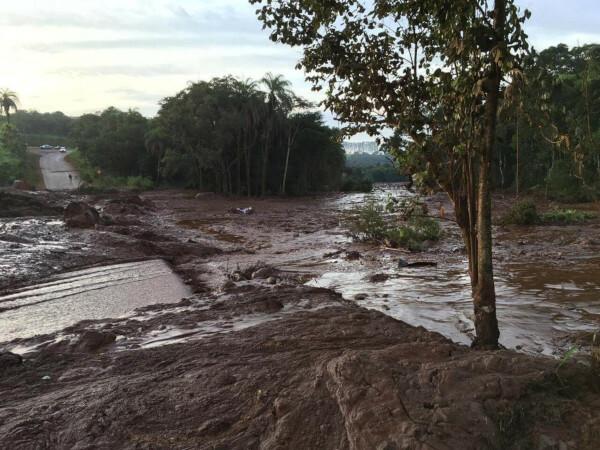O Vale's dam failure (Brazilian multinational mining company) in Brumadinho, metropolitan region of Belo Horizonte, Minas Gerais, in the early afternoon of the day January 25, 2019, caused a huge avalanche of iron ore tailings. THE Dam 1 of the Córrego do Feijão Mine collapsed, and the mud reached the administrative area of Vale, as well as the community of Vila Ferteco, leaving a great trail of destruction and dozens of deaths.
At the time of the accident, the warning sirens were not sounded, which contributed to the large number of deaths in this tragedy, as people were not advised to adopt safety procedures. The alarm probably didn't go off because of how quickly everything happened.

One of the main tourist attractions in Brumadinho is the Inhotim Institute, which has a large collection of contemporary art and an enormous botanical collection.
Read too:Seven human-caused ecological disasters in the world
→ Dam failure
According to the president of Vale, Fabio Schvartsman, a single dam broke and caused the overflow of another. The dam that broke was built in 1976, was inactive and had a volume of 11.7 million cubic meters of tailings. Vale does not confirm whether the site was under construction, but the company had a license that authorized the “recycling” of ores located in this dam. The causes of the breakup are not yet known.
Vale issued a note with clarifications regarding the dam that collapsed. The mining company states in this note that "the dam had a Safety Factor in accordance with good global practices and above the reference of the Brazilian Standard”. In addition, it presented stability statements that attested to both the physical and hydraulic safety of the dam. The Federal Police and the Civil Police of Minas opened an investigation into the case to find out if the technical documents were somehow fraudulent.
It is worth noting that disasters like this raise the alert of the constant need for inspection of these places, in addition to the need for even stricter licensing. The president of Vale stated that: "It seems to me that there is only one solution: we have to go beyond any standard, national or international. We are going to create a safety mattress far superior to what exists today."

The Minas Gerais Fire Department released images of the areas affected by the collapse of the Vale dam.
(Photo: Fire Department of Minas Gerais)
→ Number of deaths and missing
The mud released after the collapse of the Vale dam in Brumadinho destroyed several houses, in addition to the area administrative office of Vale, which had several employees, and an inn, which had 35 people at the time of the tragedy. hosted. Several people, therefore, were affected.
By the afternoon of February 1, 2019, seven days after the dam burst, it had already been 110 confirmed deaths and 238 missing persons. Of the 110 dead, only 71 had been identified. The first victim identified was the 35-year-old physician Marcelle Porto Cangussu.
The Fire Department of Minas Gerais, the Brazilian Air Force and the Army are active in the rescue. Israeli military also participated in the four-day search of Brumadinho. There is also a specific team working on the rescue of fauna in the region.
Do not stop now... There's more after the advertising ;)

Firefighters work tirelessly to rescue victims of the terrible disaster in Brumadinho.
(Photo: Fire Department of Minas Gerais)
→ Environmental impacts
According to Vale, the mud from the dam failure was not toxic. However, in any case, this disaster represents serious problems for the environment. The large amount of released material passed over a large area, immediately triggering the death of several people and also of other animals and plants. It is important to emphasize that the affected region is an area with remnants of the Atlantic Forest and, therefore, rich in biodiversity.
According to a note released by the State Forestry Institute (IEF) on February 1, 2019: "The area total occupied by tailings, which starts from Dam B1 until the encounter with the Paraopeba River, was 290.14 acre. Of this total, the area of impacted vegetation represents 147.38 hectares."
In addition mud, that contains iron, silica and water, reached the Paraopeba river, which is one of the tributaries of the São Francisco River, negatively affecting the quality of the water at the site. It is worth noting that, although the sludge is not considered toxic by Vale, the State Departments of Health (SES-MG), Environment and Sustainable Development (Semad), and Agriculture, Livestock and Supply (Seapa) reported that the water present in the river presented risks to human and animal health after initial results of monitoring. In addition to the composition of the mud, we cannot forget that it is also responsible for reducing the amount of oxygen available in the water, triggering the death of aquatic fauna and flora. With regard to the São Francisco river, the expectation is that the mud is “diluted” before reaching the river.
The soil in the region can also be affected due to the large amount of mud deposited. One of the first impacts is the alteration of the original composition of the soil. In addition, the mud, when drying, usually makes the region very compact, harming the development of vegetation.
Youenvironmental impactsof the rupture of the dam in Brumadinho will probably be less than the impacts of the rupture of the dam in Mariana, which is considered the biggest environmental disaster in our country. WWF Brasil issued a note of regret in relation to the rupture of the dam in Brumadinho. This organization stressed that: "A disaster of these proportions can – and should – be avoided through environmental laws that guarantee the safety of communities and nature."
Read too: Environmental impacts of the Mariana accident
→ Disruption of the dam in Mariana

The collapse of the dam in Mariana caused the death of the Rio Doce
The collapse of the Vale dam in Brumadinho happened a little over three years after the collapse of the dam in Mariana. The tragedy in Mariana, which took place in November 2015, left 19 people dead, including residents and employees of the Samarco company, which was also controlled by Vale. Soil and water in the region were contaminated. One of the most affected was the Rio Doce, which had its aquatic fauna and flora destroyed.
Read too: Environmental impacts generated by mining
By Me. Vanessa Sardinha

